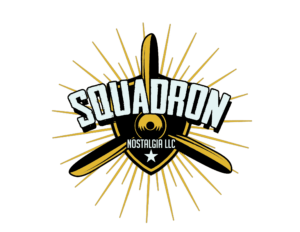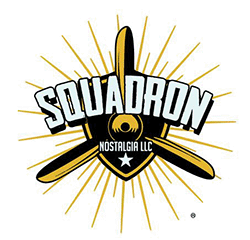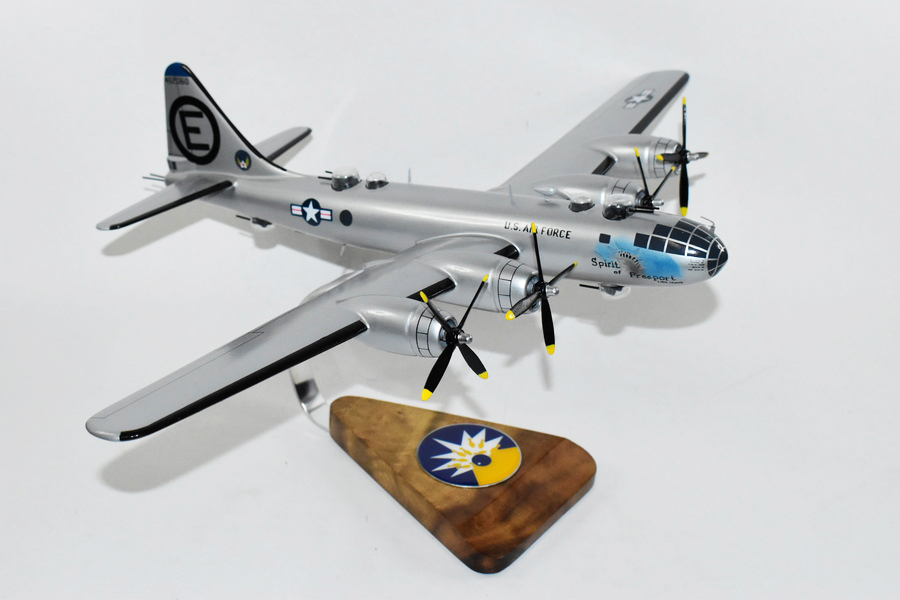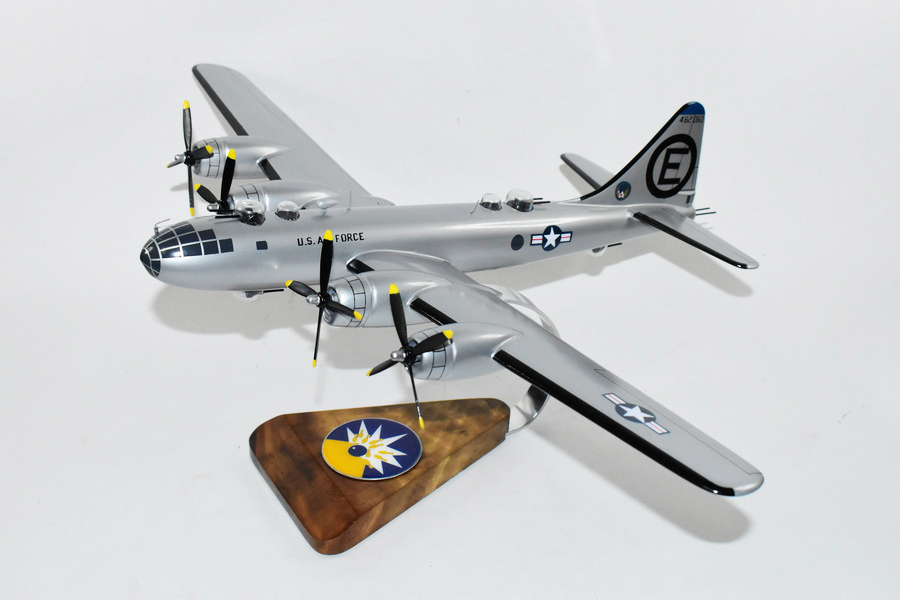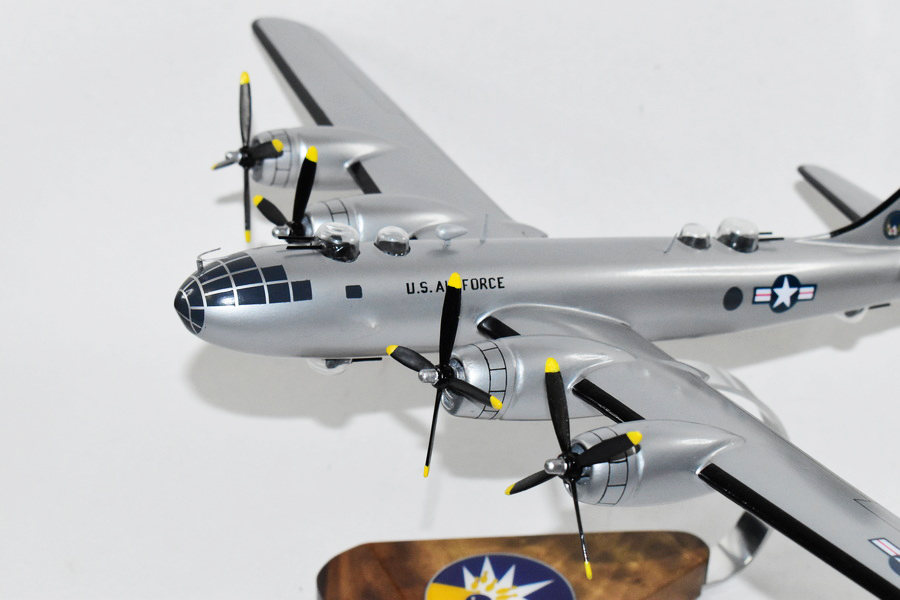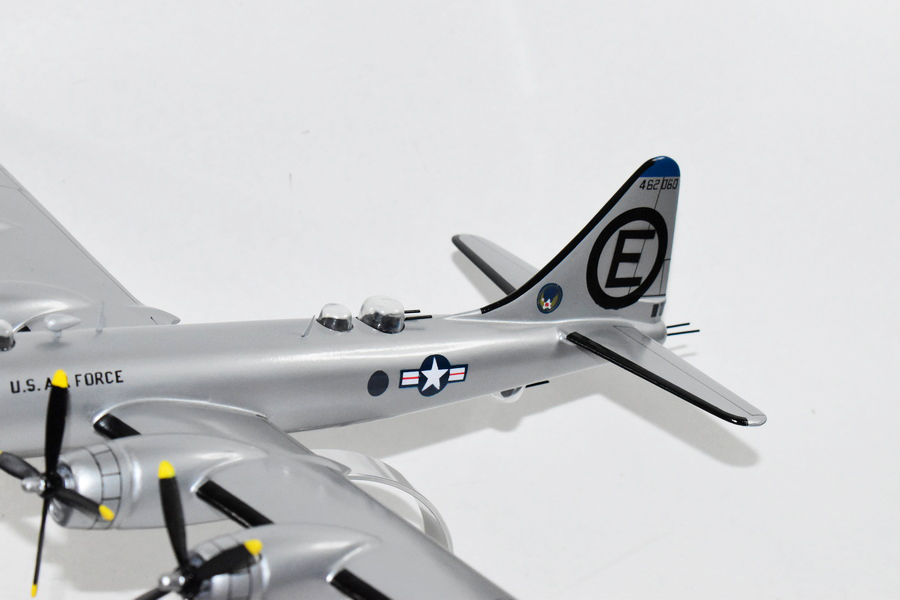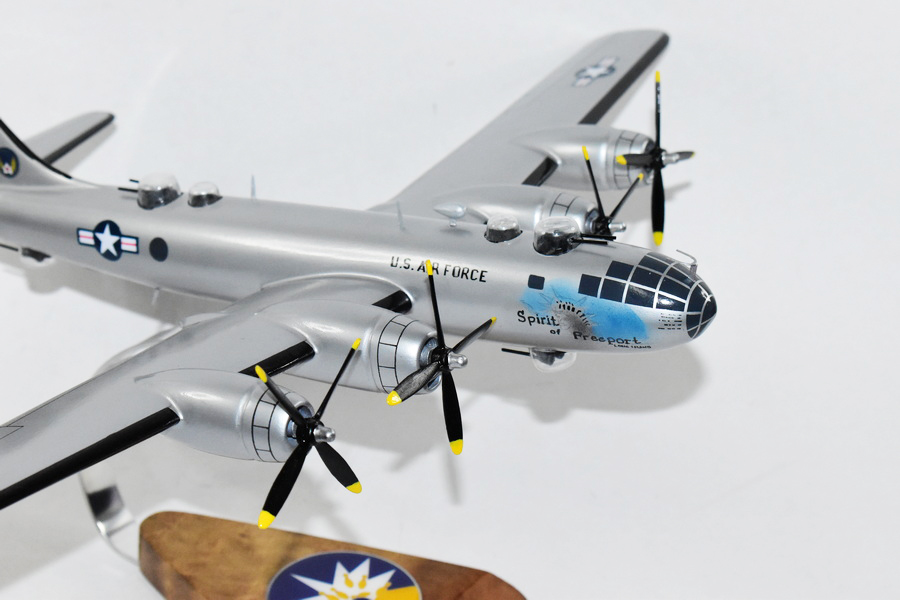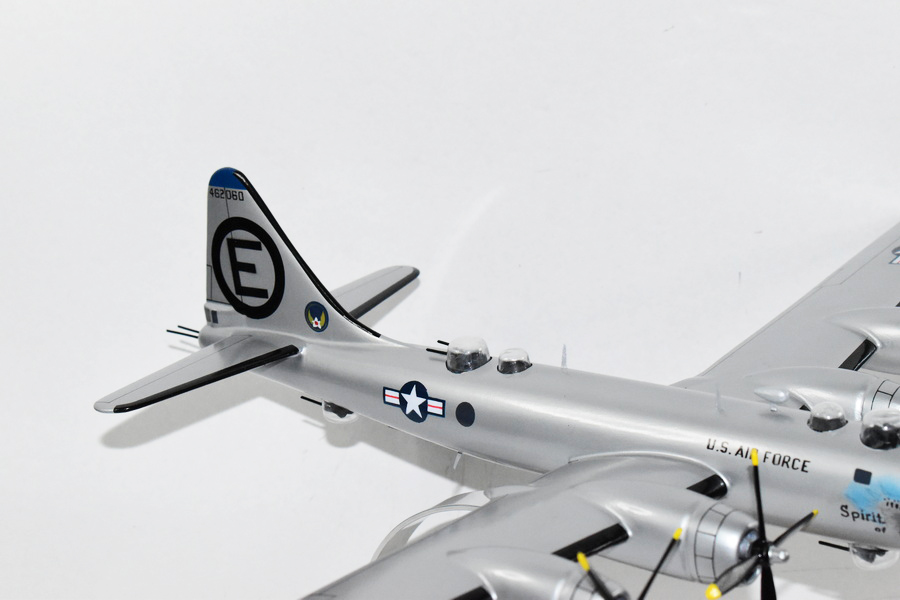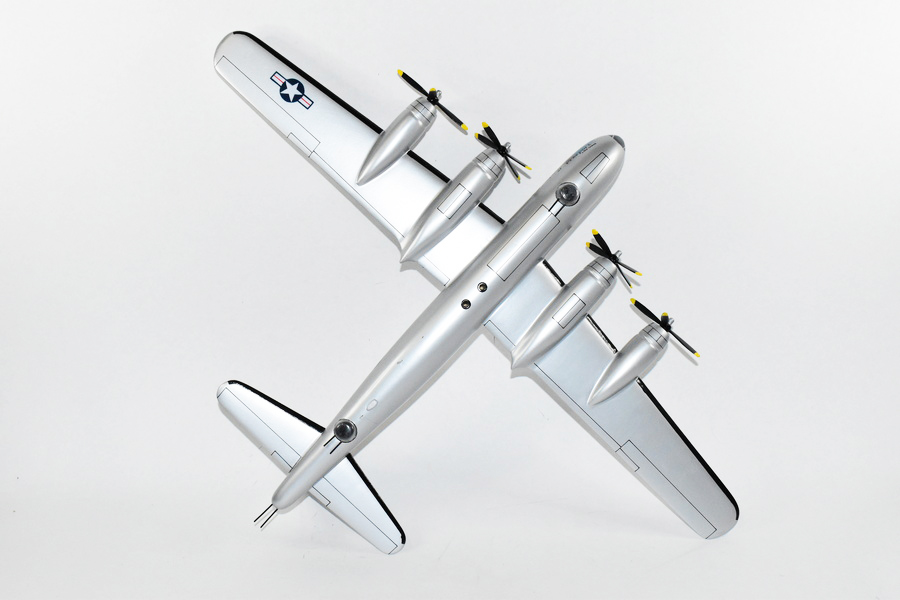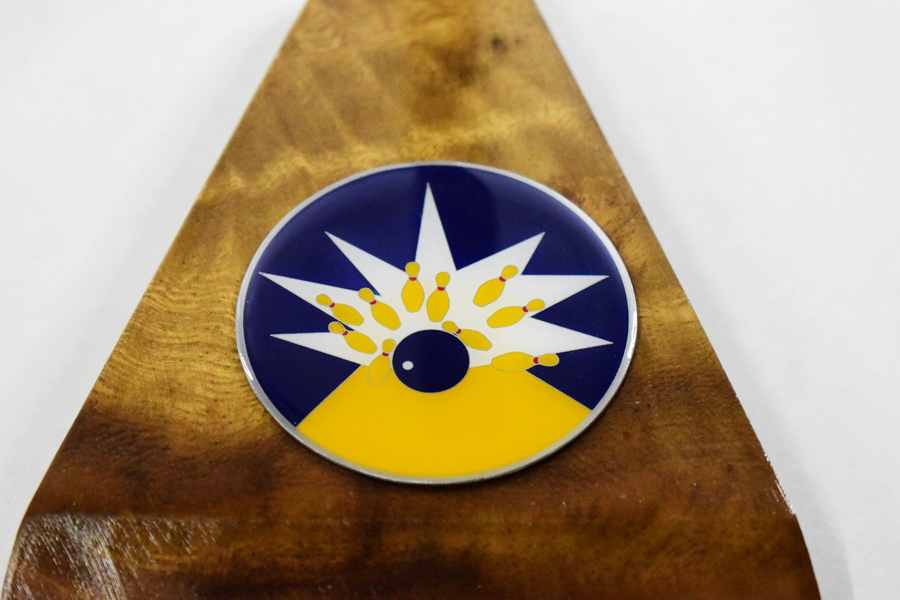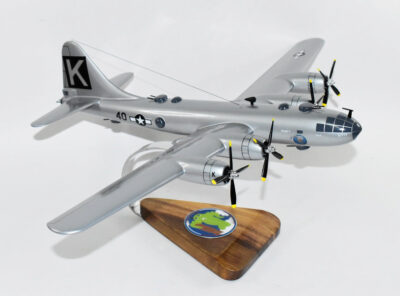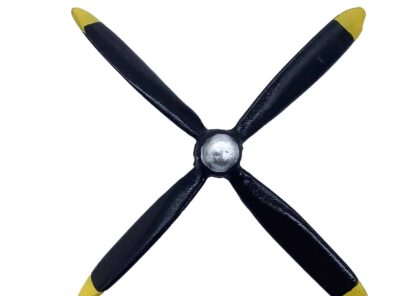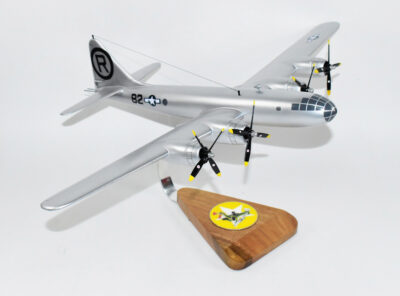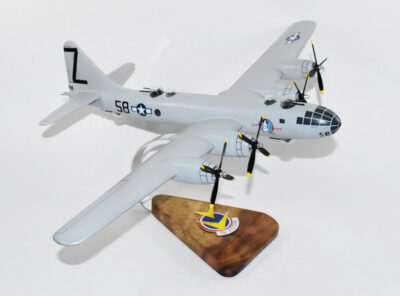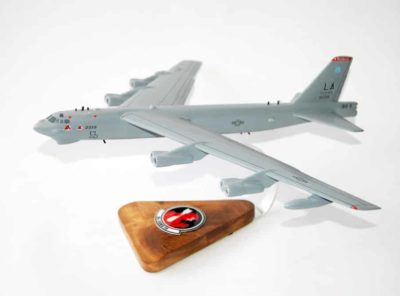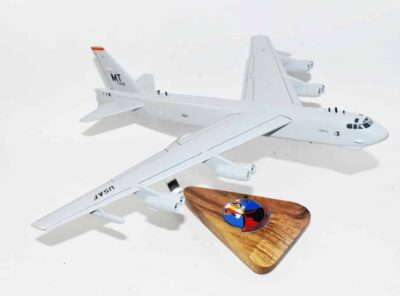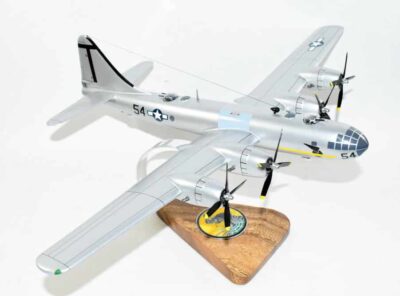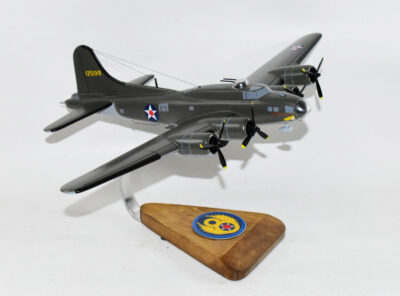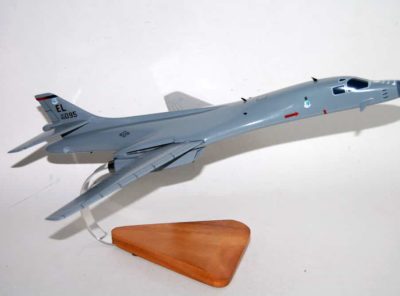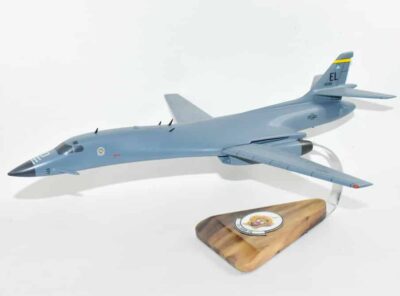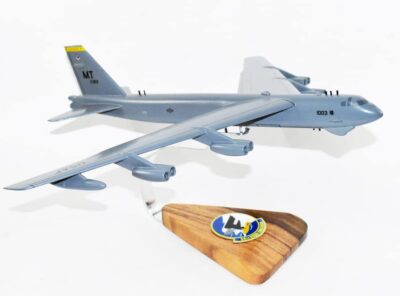Description
19th BS 22nd BG Spirit of Freeport 1950 Kadena Japan B-29a
Fly with the 19th BS 22nd BG Spirit of Freeport 1950 Kadena Japan in this hand crafted B-29 model. Each piece is carved from wood and hand painted to provide a piece you’ll love.
- Length – 18 inches
- Wingspan – 21.5 inches
- Made from Mahogany
- US Veteran Owned Business
- The product is not intended to be used by children 12 years and younger.
The 19th was established as a GHQ Air Force medium bomber squadron in 1940 as a result of the buildup of the United States Army Air Corps after the outbreak of World War II in Europe. It trained with a mix of Douglas B-18 Bolos and Martin B-26 Marauders.
After the attack on Pearl Harbor brought the USA into World War II, the squadron was transferred to the West Coast, flying anti-submarine patrols from Muroc AAF, California from December 1941 to the end of January 1942. It was then assigned to the new Fifth Air Force, originally based on the Philippines. Leaving the B-18s at Muroc, the squadron moved to the South Pacific where it flew its first combat missions from Garbutt Field, Townsville, Australia, against Rabaul, New Britain. In addition to frequent raids against Rabaul, the 19th flew against enemy shipping, facilities, and troop concentrations in New Guinea and provided close air support for Allied troops fighting there, until being withdrawn from combat in January 1943. With refurbished B-26s, the 19th moved to New Guinea and returned to combat in mid-July 1943.[3]
The squadron was again re-equipped, with Consolidated B-24 Liberators, in early 1944, then returned to combat status on 10 March 1944 with a raid against Manus Island. Most operations were against targets in the Bismarck Archipelago until the 19th moved to Owi Island in late July. The squadron flew its first mission to the Philippines Islands on 1 September 1944, hitting Japanese installations at Davao, Mindanao. The B-24s hit enemy facilities in the Celebes and on Mindanao, with an occasional raid against the oil refineries at Balikpapan, Borneo. Raids continued until the squadron moved in early December 1944 to Anguar, Palau Islands. From this station, the B-24s bombed targets throughout the Philippines. In January 1945, the 19th moved to Samar Island, Philippines, before finally relocating in March to Clark Field. In the meantime, in mid-February, the 19th raided Formosa for the first time, and on 21 March, flew its first mission into China. In June 1945, for a week, the B-24s flew from Puerta Princesa, Palawan Island, to hit targets on Borneo in support of Australian forces landing there. The 19th flew its last bombing mission of the war on 18 July 1945, to Formosa. In August the squadron moved to Okinawa and flew reconnaissance missions over Japan.[3]
The 19th flew training missions in the Far East until being moved to Smoky Hill Air Force Base, Kansas, in May 1946. It deployed to England in November 1946, where it flew training missions to Accra, West Africa, Aden, Yemen, and Arabia, returning in February 1947 to Smoky Hill AFB, then to March Air Force Base, California in May. The 19th again deployed to England from November 1949 to February 1950 where the squadron flew training sorties to Germany and Dhahran, Saudi Arabia.
